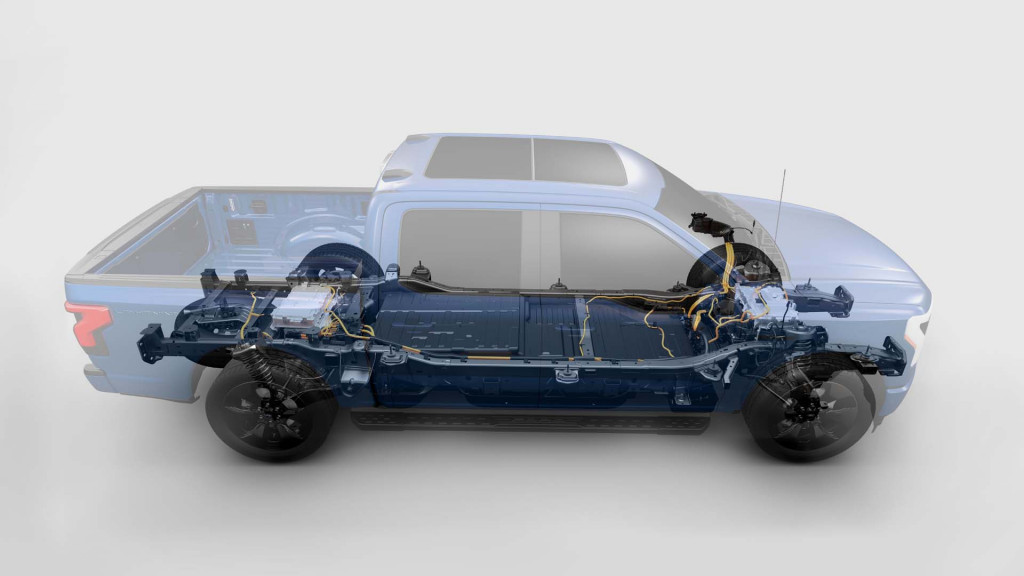The 2022 Ford F-150 Lightning may not be the most efficient EV, but it will have a much lower carbon footprint than the internal-combustion F-150. And a new Union of Concerned Scientists (UCS) analysis helps underscore how significant than difference is.
"For over 70% of the population in the United States, driving the electric version of this vehicle should produce less than half the global warming emissions of the gasoline model," David Reichmuth, senior engineer for the UCS Clean Transportation Program, wrote in a blog post.

2022 Ford F-150 Lightning
Ford and the Environmental Protection Agency (EPA) haven't released official efficiency figures for the Lightning, but the UCS estimates efficiency will be around 0.46 kilowatt-hours per mile to 0.50 kwh per mile—or 2.0-2.2 miles per kwh.
That would make it one of the least-efficient EVs in production—not counting HD heavyweights like the upcoming GMC Hummer EV—but still much better than gasoline versions of the F-150, according to Reichmuth. In California, based on power generation for its electrical grid, the Lightning should produce emissions equivalent to an 85-mpg gasoline car, he wrote.
Unlike a gasoline or diesel pickup truck, the Lightning will also keep getting cleaner over its lifetime—as the grid it's charged with transitions to more renewable sources.

2022 Ford F-150 Lightning Pro
To put that in perspective with a more efficient example, a 2021 Tesla Model 3 Standard Range Plus driven in California has emissions equivalent to a 177-mpg gasoline car, according to the UCS analysis. That's less than a fifth the emissions of the average new gasoline car, and over 65% less than even the most-efficient gasoline car, Reichmuth wrote.
The UCS has been tracking the overall carbon footprint of electric cars for a decade, and it's confirmed an important fact: Electric cars can get cleaner as the electricity grids they're charged from switch from fossil fuels to renewable energy.
As use of coal in electricity generation has stalled and renewable energy has gained momentum, a clear trend of lower EV emissions has emerged in the data over the years. Today, 97% of people in the U.S. live in an area where driving an EV produces fewer emissions than a 50-mpg gasoline car, according to the UCS.
However, the grid emissions in a specific area, along with purchase and operating costs of and EV, can create a lot of variables. The MIT Trancik Lab's Carboncounter.com project can help consumers navigate those numbers, and it was updated earlier this year to include most production EVs.












